Road Trip: The Olympic Peninsula
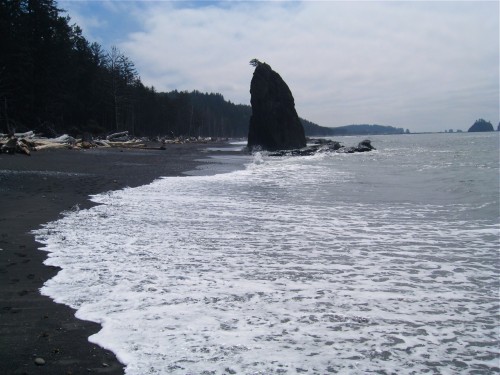
As much as we love North Cascadian landscapes — and with over 7,000,000 acres of protected public lands in Washington and British Columbia, there will never be an end to options for explorations — we here at the Institute are still called to visit and experience other amazing places on our planet. We’ll publish accounts of some of the places NCI staff and graduate students visit in our Road Trip series…
My first 2010 trip away from the Salish Sea occured in May when I caught the Keystone Ferry for Port Townsend and spent a solo week in Olympic National Park, hiking, paddling and observing the emerging lushness of spring.
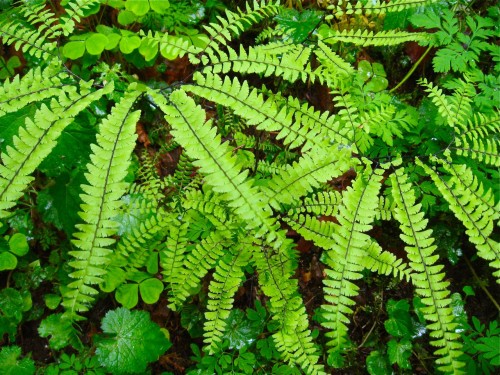
My first destination was Lake Ozette in the far northwestern corner of the state. I posted up at a nearly-empty campground on the northshore, dropped my sea kayak on to the lake and paddled a couple of hours south to a remote backcountry campsite at Erickson’s Bay. I was lucky to have decent, stable weather, no wind and Ozette — the third largest lake in the state — all to myself. Trails from the bay, as well as from the northshore campground, wind 3 miles through coastal forests, prairies and the remains of homesteads to the wild Pacific coast, where one can explore tidepools, view sea stacks, observe seabirds and seals and search for migrating grey whales and the famous Wedding Rocks pictographs.
At Ozette, with long agenda-less days stretching out before me, I started reading Tim McNulty’s wonderful book, Olympic National Park: A Natural History, recently updated and reissued by University of Washington Press. Tim’s amiable guide helped me to know the stories behind the nature I was so enjoying, like what the flourescent blobs in the tidepool were, or how sea anenomes and starfish interact, or where the whales were coming from and where they were going. I greatly appreciated not only the wealth of authoratative natural history information in the book, but also the friendly tone and poetic descriptions that Tim employs to make the unique “island” ecosystem of the peninsula come to life.
Sitting next to a campfire reading the chapter on the cultural history of the peninsula — and the amazing story of the Ozette Village archaeological discovery and recovery — inspired me to make my next stop at the Makah Museum in Neah Bay to witness the tribal artifacts that were discovered in the 1970s beneath a slumping mudbank facing the ocean.
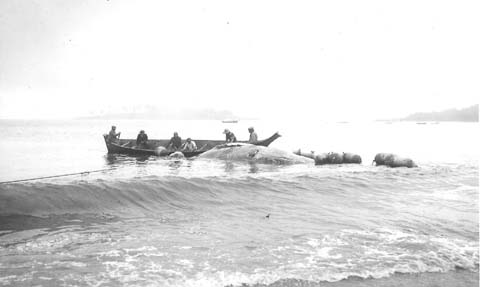
Having the museum all to myself, I spent several hours marveling over all the different essential items of life that the Makah created from natural materials at hand : waterproof cedar bark hats, mussel-shell harpoon tips, halibut hooks made of bone, fishing nets woven from stinging nettle fibers — all well preserved from being encased in mud for hundreds of years. I was especially taken by the technologies that the Makah developed to stalk, kill and process whales that migrated past their villages every spring — the massive sea-going cedar canoe on display was amazing for its marriage of form and function — and could hardly imagine the fortitude and skill that was required to hunt these behemoths of the sea. I was also drawn to the displays of masks, rattles and other talismans that the tribe used to interact with the spirit world, especially in the long, wet, dark days of winter when families had retired to their shared cedar longhouses.
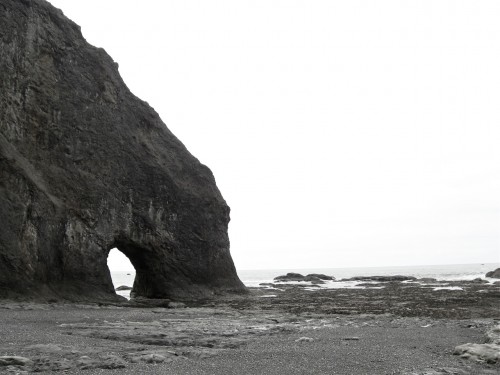
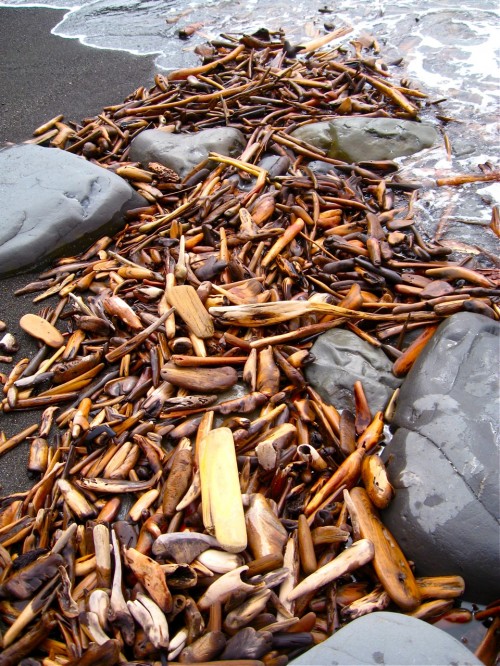
Leaving the northwestern corner of the park, I drove south, spent a night at Rialto Beach for more beachcombing, and then traveled on to the Quinault Valley. I was hoping to paddle around this lake too, but had a hard time finding a boat launch, and the afternoon wind was making the lake choppy, so I motored up the dirt road following the North Fork of the Quinault River until it dead-ended at another empty campground and trailhead.
As many times as I’ve been camping in the Olympic rainforest, it still blows me away every visit — the thick sponginess of the moss, the canopy-filtered light, the girth of the trees and the way that life grows upon life grows upon life, all these layers of the natural world, living and decaying, every niche filled with a fern or mushroom or lichen or outstretched vine maple branch.
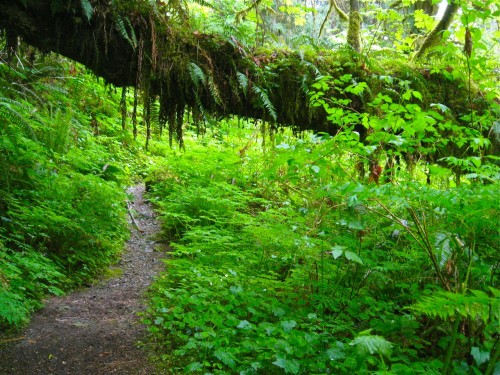
The rainforest is a riot of green growth fed by 10 to 15 feet of rain every year. Within its verdant cathedrals lies a very deep and profound silence. After spending several days in the presence of this silence — interrupted only by the whirrrrr of divebombing hummingbirds, the kaw of ravens and the clacking of river stones being washed down to sea by the milky, glacial-fed river — everything slows down and you have more space to notice and appreciate what’s around you. In an age of information traveling at light-speed and the constant din of digital infotainment, a languid break in the Quinault was just what I needed. At the end of my week, I was very sad to leave this sanctuary, but made a vow to keep in touch with the tempo I had rediscovered there.
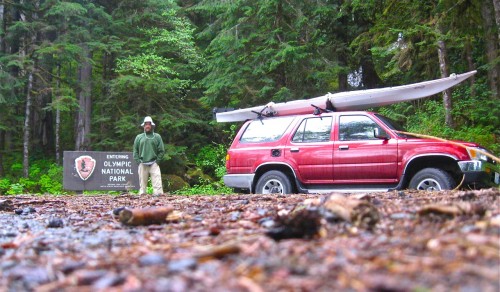
May is a superb time of the year to visit the Olympic Peninsula: no mosquitoes, no tourists, endless places to camp, low elevation (and therefore snow-free) trails and the full green goodness of spring. The national park facilities like visitor centers and ranger stations were not yet opened, but I knew what I was doing and so didn’t miss them. It’ll get quite a bit more busy for the summer once school is out, and then slow down again in September as the big leaf and vine maple leaves change colors and fall to carpet the forest floor.


If only more people could choose to observe moments of profound silence. Your May road trip sounds like a beautiful retreat–thank you for sharing what you learned. I hope you’ll write about Yellowstone, too.
Absolutely wonderful! My favorite place on the planet. Thank you for sharing.
While this article is technically quality infotainment, it was educational naturevision as well. Thank you for your illustrative words; I must go here as soon as I can!